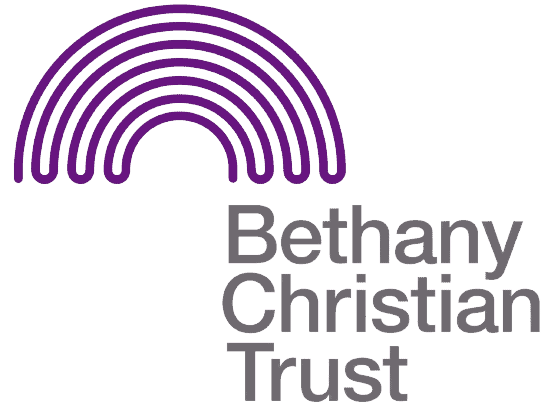
Learn personal safety habits for caring with vulnerable people.
We bring skills to care services teams who meet distressed older people in their work who may present with surprising aggression.
As a healthcare leader, you realise that complex conflict in your care home or service is an increasing problem:
Care support staff and Nurses seem to be coping but feel the pressure.
The care home is carrying health & safety and reputational risk.
Residents are both vulnerable and presenting with complex needs with distress.
A training intervention seems to be the answer, but it MUST be effective and appropriate...
At Dynamis we provide evidence-based and scenario-driven conflict management training through the whole spectrum of conflict, enabling staff with the skills and knowledge they need to professionally respond to any level of conflict.
Book your free Training Needs call now, to find the right training for your team.
Hundreds of safer clients...
Hospitals and
Healthcare

PUBLIC-FACING ORGANISATIONS

LOCAL GOVERNMENT & CITIZEN SERVICES

PRIMARY AND SECONDARY SCHOOLS

This is what we do
Dynamis teaches a blend of Understanding Behaviour, Verbal Skills for De-Escalation and then last-resort physical skills which your team learn and practice in our scenario-driven training sessions. Over the years we have worked with many different providers of support who focus on children and this has broadened our experience of many complex, interlocking factors - developing a sensitive approach to the management of behaviour with children..
Wouldn't it be better if we could avoid escalating these situations in the first place?
Tried and trusted pathways for managing people who are abusive, refusing or resistant.
Using empathy as a guide to create safety and to aid recovery for people who are in emotional distress.
A system of physical alternatives which may be required if we can not create safety any other way.
I didn’t know what to do. I was alone. He was repeatedly hitting me. One question played over and over in my mind - “Am I allowed to stop this?”
These were the comments of a carer our team met recently. While doing her night-time rounds, she had encountered a resident who was strolling the corridors in the care home, and on talking for a few moments, they decided they would drink a cup of tea together. They walked together to the kitchen. When the carer turned to begin her routine tasks of tea-making, she was suddenly and unexpectedly beaten over the back and head by the resident, a usually gentle man with cognitive difficulties. His life, spent serving in the armed forces, had given him lasting strength and vigour.
The situation was resolved. Neither person suffered any notable injury. Their relationship as carer and client did not suffer. They were both very, very lucky.
independence and safety: emotive issues
Using force to control the behaviour of residents in our care homes, is a sensitive matter to which careful consideration must be applied. Appropriateness is at the centre of the issue, and forefront in the minds of many carers, like the one above, who may find themselves in exceptional circumstances.
Recently, great leaps forward have been made in understanding the causes and the resolution of challenging behaviour in vulnerable people. These approaches emphasise the recognition of a person’s core needs, which when they are not met, may be causing them to be aggressive or violent. Carers who skillfully identify and recognise these unmet needs often devise and employ creative strategies to resolve situations which could otherwise become dangerous. Increasing frustration which is not defused turns into anger and maybe violent behaviour which can result in harm to the client or to the people who care for them.
Sometimes though, despite careful risk assessments and care planning, some circumstances and factors can combine to create a flashpoint, where a resident’s behaviour becomes a risk to their own or to another person’s safety. Staff in these exceptional circumstances can experience hesitation, anxiety and indecision - how to act? what is appropriate? what is allowed? what is to be avoided?
Some opinions, which are often based on personal viewpoints and misplaced values, favour policies which prohibit any kind of restraint being used at any time. These arguments are often particularly loud when it comes to physical restraint and emotions can run high. Fortunately, plenty of good guidance is available.
Gaining Clarity
Restraint is defined by the Royal College of Nursing in plain English as “‘stopping a person doing something they appear to want to do” and also as “the intentional restriction of a person’s voluntary movement or behaviour.’
Restraint is typically used in order to safeguard someone from harming themselves or from harming another person. ‘Harm’ can be defined as emotional, social, behavioural, intellectual or physical impairment or ill-treatment.
The National Minimum Standards for Care Homes for Older People states that:
“You can expect that the home is run in a way that protects you from any avoidable risk or harm, including physical harm and infection”.
This positive statement has the same general meaning as the direction in the Health and Safety Act 1974 section 3 (1) which underlines the employers duty of care to service users.
Furthermore, under Section 2 (2) (C) employers have an obligation to ensure that staff have the necessary information, instruction, training and supervision to carry out their work safely.
More specifically, in terms of the care of vulnerable people, the National Minimum Standards for Care Homes for Older People and the Care Homes for People with Mental Health Problems both specifically address restraint:
“You know that the care home has a written policy and procedures on the conditions when restraint is used, and that staff are fully trained and supported in the use of restraint".
The requirement of Standard 5 requires that policy needs to be in place for the use of restraint in the home, and also that staff are fully trained in restraint.
Now, in an effort to lessen their concerns about the complex issues involved in ‘restraining’ vulnerable people, some managers resort to a “no restraint”, “non-intervention” or other similar policy. While politically correct, and seeming to uphold ethical or professional values, this strategy creates risk, liability and potentially supports a gross breach of the duty of care owed to people in care. Where risks are present to the health and safety of staff, those risks must be assessed. Where necessary, control measures must then be put in place to manage those risks effectively.
Having a no-restraint policy is like saying that “luckily, we don’t have fires around here and we don’t like the idea of ever having a fire, so we have a no-fires policy”. Often, a no-restraint policy is a sure sign that restraint is happening, but it is not being managed. In the era of Protecting Vulnerable Groups legislation, this is not acceptable.
Looking further at guidance, we can see that the excellent Mental Welfare Commission for Scotland document "Rights, Risks and Limitations to Freedom" states in section 3.2.6 that :
“Restraint techniques require to be taught effectively with regular refresher courses. Incorrect use of restraint techniques can lead to injuries. Recognised training in such techniques should therefore be an essential part of all nurse and care staff education, to ensure that the least restrictive methods are always used”.
There are clear directives here for management and staff. Ignorance can not be an option when vulnerable people’s lives may be at risk because of insufficient knowledge, skill and judgement in this area.
Confidence in Action, or Confident Inaction?
The Royal College of Nursing in its guidance offers excellent advice:
“In most circumstances restraint can be avoided by positive changes to the provision of care and support for the older person”. So, intervention by caring control should almost always be a last resort.
However the guidance also states that there may be scenarios in which a physical intervention to control high-risk behaviour might be necessary. Clearly, carers need support to make this judgement.
The working principles of common and criminal law regarding acts and omissions in regard to the use of force adhere to key principles. Any intervention must be reasonable in the circumstances. What constitutes ‘reasonable’ is a topic which deserves an article of its own, however below are a number of example scenarios in which it might be reasonable for a carer to intervene to safeguard a client.
In all these situations, the use of force to control a client’s behaviour would have to be governed by sound legal and ethical principles, Fortunately, the legislation, guidance and good practice all follow the key idea of ‘reasonableness’. Staff can use the legal test of “Reasonable Force” to make ethical, appropriate decisions about the right course of action to take. This will also assist them in explaining their actions after any control measure is used.
Inherent Risks and the biggest risk of all - ignorance
If exceptional circumstances arise in which staff must use force to stop harm from occurring, but they do so without sufficient knowledge of the hazards inherent in using force, the results can range from being unfortunate (psychological distress from inappropriate touching) to fatal (sudden death of the client, from positional asphyxia).
Certain ways of holding a person, certain body positions which may occur during an intervention, certain pre-existing medical conditions present in the client may each be factors which drastically increase the seriousness and risk of an intervention. Staff must know what these factors are, even for that unique moment - that isolated situation - when they might arise.
As Martin Fletcher, Chief Executive of the National Patient Safety Agency says in his comments for the Royal College of Nursing Guidance “Let’s Talk About Restraint”:
“if staff don’t have a clear understanding of the circumstances where restraint is justified or positively required, they won’t be able to recognise the circumstances where restraint is wrong or abusive.”
Taking Responsibility
Training in Safe Caring & Safe Holding should help staff to understand a number of key issues:
- what actions could be seen as ‘restraint’
- how to minimise the need for restraint
- the legal and ethical frameworks relevant to restraint
- when restraint may in fact become abuse
- situations in which restraint may be necessary
- the risks inherent in restraint and how to manage them
The cost of training for staff is not insignificant. Finding time on the staff roster for training days, or even finding the fees to pay a competent training provider, is no small investment. Under the Health and Safety test of whether or not it is ‘reasonably practicable’ to train staff and control the risks of violence though, there can be little doubt that training to prepare for an incident is better than possible incrimination afterwards!
“Failing to prepare is like preparing to fail”
Unfortunately, not just any trainer (or alarmingly, any set of instructional DVDs) will do! The area of restraint training is continually evolving and becoming more professional, however some providers are being left behind by advances in legislation, guidance and technical progress. For example, once-taught ‘basket-holds’ are now accepted as highly dangerous and inappropriate, but they are still found in some instruction manuals. Crucially, the implications of the Human Rights Act Article 2 on the “Right to Life” apply in the UK but are typically not addressed in US-based systems of restraint training.
Simply, not-buying is not much of an option, and when buying, buyer beware! It is the responsibility of the commissioning organisation to carry out due-dilligence with any training provider they choose. If you are commissioning training, you are responsible for making sure it is appropriate for your environment, your staff and your service users. The issue of competence is hugely important.
The educational content of the programme should be quality-assured by an awarding agency, so you know what you are getting is going to be appropriate. The technical methods being taught to your staff should be approved by a competent governing-body so that you know that the risk of injury is minimised and manual handling considerations are addressed. The training should be documented and risk-assessed and the trainers should have current qualifications in their field, so you know you are up-to-date with best-practice. Without these checks in place, it is conceivable that a training programme could merely be increasing your organisation’s risk and liability!
Training: a risk in itself?
A concern which is often noted is that training, in itself, can in some way increase the possibility that staff will try to control behaviour by physical force or coercion or bullying, where no such control is required. In contrast, the purpose of increasing clarity around this issue is to ensure that caring control is ONLY used when absolutely necessary and strictly proportionate. Guidance always stresses that alternatives are usually available to physical control. Restraint should be used rarely and only in a very narrow set of circumstances, as discussed above. Good training in restraint will always have a strong legislative component which gives staff have the opportunity to develop their judgement so that they can make good decisions in different scenarios and situations.
Where the care team are all equally aware of the issues involved and can together make informed decisions about appropriateness, the risks of abuse and inappropriate restraint are lower.
The key message here is that a considered and informed approach to Safe Caring and Safe Holding in regards to high-risk behaviour increases clarity, confidence and protection for all. The right information also reduces the risks to vulnerable people in our care.
Training Content
1) Context of Restraint in Care Homes
In our experience of surveying staff in care homes for older people over 2008-2009:
However, the Royal College of Nursing offers excellent advice regarding physical intervention: “In most circumstances restraint can be avoided by positive changes to the provision of care and support for the older person”.
In this first session, we aim to discuss staff’s own experiences of challenging and aggressive behaviour with the people they care for, and to elicit their own attitudes, ideas and approaches to reducing the incidence of frustration, aggression and combativeness within their service.
2) Defining Restraint, Aggression, Challenging Behaviour
Challenging behaviour is a catch-all term that, in the context of caring for older people, includes one or combinations of shouting, wandering, biting, throwing objects, repetitive talking, destroying personal possessions and other objects, agitation and general anger, physical attacks on others, and waking others at night. In short, this term describes any behaviour by patients that is deemed to be dangerous to themselves, their fellow patients, and staff, or is considered antisocial within environments where those patients have to coexist with others on a long term basis.
Restraint is defined by the Royal College of Nursing in plain English as “‘stopping a person doing something they appear to want to do” and also as “the intentional restriction of a person’s voluntary movement or behaviour.’
The word “Dementia” is used widely to describe a group of diseases which affects the brain and cause a progressive decline in a person’s abilities to remember, think and learn. The main abilities affected are: Judgement, Orientation, Emotions, Memory, Thinking
In this session, we will seek to clarify the terms which will be used throughout the training with staff, including: Violence at Work, Restraint, Assault, Dementia, Challenging Behaviour, Delirium and so on.
We will introduce the concept of “coping versus not-coping” and its importance in overall issues of comfort versus anxiety.
The majority of care staff were generally unaware of best practice guidance and some felt their knowledge was insufficient or they didn’t have enough time to be able to give the care they wanted to. - “Remember I’m still me” - Care Quality Commission
3) Common and Criminal Law regarding Restraint and Restriction of Liberty
The working principles of common and criminal law regarding acts and omissions in regard to the use of force adhere to key principles. Any intervention must be reasonable in the circumstances. Staff can use the legal test of “Reasonable Force” to make ethical, appropriate decisions about the right course of action to take. This will also assist them in explaining their actions after any control measure is used.
Key issues in Justifying a use of force or restraint:
Restraint is only used as a last resort
Restraint is never used as a convenience for staff
Restraint is never used to force compliance with instructions
Risks of restraint must be considered and balanced with their outcomes
Staff must understand the balance of their duty of care and their duty to prevent harm
In this session, we will look to give the staff clarity, about how to make good judgements regarding restraint decisions, when necessary and proportionate to the circumstances they find themselves in.
4) Local Policy and Guidance
Staff working for the organisation must understand the systems of work put in place by management in order to govern their behaviour and decision-making when dealing with challenging behaviour. Local Guidance and the “Safe Caring and Restraint” Policy will therefore form a key resource for this programme.
In this session, we will introduce key elements of guidance to staff, which underlyine and re-inforce the key issues of common law, health and safety law and human rights which will also be introduced.
“You know that the care home has a written policy and procedures on the conditions when restraint is used, and that staff are fully trained and supported in the use of restraint". - National Minimum Standards for Care Homes for Older People
5) Standing methods of holding and immobilising: Non Harmful Methods of Control
Many staff in care homes for older people have had to protect themselves or another person by placing their hands on a resident to immobilise them temporarily. Often, they have to do this in a very primal, unskilled fashion and can suffer some discomfort because of the potential harm they may or may not be causing.
In this session, we endeavour to show staff risk-assessed and appropriate techniques of physical control and holding whose design-purpose is to minimise the risk of harm while offering a reasonable level of control. We also continually re-inforce the issues of lawful use of force at all times when it may be called for (see above).
6) Seated methods of holding and the De-escalation Procedure
70% of challenging behaviour occurs during direct personal care (Miller et al 2005)
Our physical holding methods are designed to be used either standing or seated, in order to give the staff the widest possible set of tools which may be used when necessary. In oder person’s care homes, we often find that the seated methods of holding are preferred, because:
Our seated methods also incorporate a procedure for the gradual releasing of holds as the person regains a sense of control and ease.
“Restraint techniques require to be taught effectively with regular refresher courses. Incorrect use of restraint techniques can lead to injuries. Recognised training in such techniques should therefore be an essential part of all nurse and care staff education, to ensure that the least restrictive methods are always used”. - Mental Welfare Commission for Scotland - "Rights, Risks and Limitations to Freedom"
7) Teamwork during an incident.
Staff who are involved in an emergency incident, whereby a resident in a care home may need to be safely approached and engaged, benefit from practicing their positioning and proximity, their co-ordination and their communication skills in the training setting. We integrate this with their practice of conflict management and their deployment of holding skills.
8) Minimising the Need for Restraint and Alternative Strategies
- reflect home environment
- large visual cues
- spaces
- reduction of stimuli (noise, smells, temperature, traffic)
What can be done to reduce the risk of violence and aggression in people with dementia?
• Get to know the person – not just the illness
• Screen for and treat underlying physical illnesses and symptoms
• Increase training and skills in person centred approaches
• Reduce the impact of the environment
• Provide clear and consistent guidance (local protocols, care plans etc)
• Adopt and develop organisational models of support for staff and carers
“The best vantage point for understanding behaviour is from the internal reference frame of the individual himself” - Rogers (1951)
9) Causes of Challenging or Aggressive Behaviour
Recently, great leaps forward have been made in understanding the causes and the resolution of challenging behaviour in vulnerable people. These approaches emphasise Person-centred approaches and the recognition of a person’s core needs, which when they are not met, may be causing them to be frustrated or aggressive.
Carers who skillfully identify and recognise these unmet needs often devise and employ creative strategies to resolve situations which could otherwise become dangerous.
We have examples of wonderfully creative activity and occupational approaches, life-history resources, music therapy and others which, when the culture of a facility allows staff the freedom to do so, can become very effective interventions which increase the level of care and comfort of the resident.
The practice of observation and of developing awareness of stress triggers can be important ways of ensuring staff and resident safety. Passing on information about changes in behaviour can be critical also, to ensure other staff don’t unwittingly stumble across previously-identified triggers. This practice is underpinned by risk assessment principles, where constant identification of possible hazards is one of the key tenets of the risk control process.
PIECES framework to understand Behavioural and Psychological Symptoms of Dementia:
Physical problem or discomfort
Intellectual/cognitive changes
Emotional
Capacities
Environment
Social/cultural
10) Verbal/Non-verbal approaches to Confrontation
Communicating:
- staff expectations for communicating with residents
- Introduce yourself regularly
- Simple language
- reinforce with overt body language
- watch for non-verbal cues of distress
- Patience
- Respect
When caring for a person with dementia who is having difficulty communicating, staff are encouraged to remember that residents will pick up on negative body language such as sighs & raised eyebrows. There is evidence that non-verbal influences on communication are magnified by the effects of some types of brain damage and brain injury.
Preventing Behaviour Problems:
“I don't think we can ever truly say what a person is experiencing when they're dementing but I suspect it's a world most unlike our own, it's a world of unremitting not knowing, increasing mystery, perpetual insecurity. They misunderstand much things, they misunderstand why somebody might come up to them and say let's get those clothes off you, I mean who is this person who's saying that.” - Graham Stokes
11) Health & Safety Considerations
Standard 4 (2) of the National Minimum Standards for Care Homes for Older People states that: “You can expect that the home is run in a way that protects you from any avoidable risk or harm, including physical harm and infection”.
This positive statement has the same general meaning as the direction in the Health and Safety at Work Act 1974 section 3 (1) which underlines the employers duty of care to service users.
Employees should be supervised competently, and should be advised to avoid practices which are unsafe. This includes being made aware of procedures for dealing with ‘serious and imminent danger’ and for entering dangerous areas.
The regulations also make it clear that employees must be authorised to stop work and withdraw from circumstances where it would be unsafe to continue or stay. They may also be prevented from resuming work where that serious or imminent danger persists.
Finally, there is an obligation to monitor staff for signs or symptoms of harm they may be sustaining through their work. This may include stress or trauma suffered through incidents of aggression or violence which the person is involved in at the workplace.
“Where violent incidents are forseeable employers have a duty under section 2 to identify the nature and extent of the risk and to devise measures which provide a safe workplace and a system of work” - Lord Skelmersdale - DHSS Advisory Committee on Violence to Staff
12) Post-Incident Issues.
Staff teams are encouraged to consider the importance of post-incident debriefing, recording and reporting obligations, review of risk-assessments and care-plans. These procedures are even more important following high-risk incidents, near-misses or ‘sentinel events’, but may be just as important for any incident which could offer the team an opportunity to plan and avoid a re-incidence of challenging behaviour in the future.
Only 24% people had an adequate record of their life history. The majority of people did not have enough information about their personal preferences recorded in the personal plan. - “Remember I’m still me”- Care Quality Commission
13) Appropriate and Relevant Disengagement Skills
At the moment at which a discussion turns to an assault, when a simple question triggers verbal abuse or the seemingly compliant subject escalates into a violent assault, the person being surprised will undergo a sudden and quite drastic change in their physiology.
Physical training must acknowledge these issues - understanding natural human behaviour, incorporating an understanding of confrontation stress on physical performance and utilitising movements which work with the natural tendencies of the body, while being appropriate to the context, service users and environment.
It is our belief that the best tactics are those developed from an analysis of basic human physiology - they are then retained more readily and are closer to hand when the trainee needs them the most. Our commitment to this belief ensures that our disengagement training has the greatest degree of relevancy when it is most needed.
"Perhaps...in the heightened state of arousal caused by a real assault people would use any techniques that would work at the time. Our finding that 80% of participants managed to break away successfully without using the taught techniques does give credence to this, suggesting that breakaway methods that centre on natural instinct as opposed to highly technical manoevres are likely to be recalled more successfully" - Journal of Psychiatric and Mental Health Nursing 2009, 16
YOUR CARE TEAM CAN PROMOTE DIGNITY AND RESPECT THROUGHOUT YOUR CARE SERVICE.
Our wide range of courses are designed for public-facing teams who deal with vulnerable individuals and those capable of spontaneous aggression. Our aim is that every person is treated with dignity and is shown respect, even when there is disagreement.
Book a tailored training course from Dynamis Training and your team will:
Our Process for Working with You
HI! I'M GERARD O'DEA
Director Of Training At Dynamis
Hi and thanks for visiting our website today.
In over 15 years of working with frontline staff who face difficult, distressed and dangerous behaviour, i have seen time and again how prepared staff can perform well and respond to challenging circumstances.
From teachers to nurses, teaching and care assistants to security officers in our hospitals and social workers in the community, if you deal with people every day, managing conflict becomes a necessity.
I became involved in this work because i saw the power of training and preparation in helping people to stay safe at work and to be more successful in working with their colleagues to create better outcomes.
I and my team of professional trainers now teach in over 200 training engagements every year around the uk and internationally for a wide variety of public-facing organizations just like yours.
We have sought out the best conflict management training content and the best learning methods in the world and bring them together for you and your team.


Our Partners and Accreditation

MEMBER OF THE INSTITUTE OF
CONFLICT MANAGEMENT
Dynamis is a Quality Award Centre with the ICM, a recognised accrediting body in the U.K. for workplace training in the prevention and management of workplace violence.

EUROPEAN PARTNER FOR
Dynamis is the premier European Partner for Vistelar, a global consulting organisation covering training across the entire spectrum of human conflict.
REGIONAL REPRESENTATIVE FOR 9 ATTITUDES BEHAVIOURAL TACTICS
Dynamis represents the 9 Attitudes system, a fully behavioural approach to self-protection and physical control which is based on the observable realities of physical confrontation.
Our Courses and What they Cover
We tailor our courses to meet the needs of each organization or team that we meet, however our 4 main areas of work are as follows:
Join Over 3,000 Happy Customers
What our customers are saying:

Best Course I have attended in the NHS...
“This was by far the best course I’ve attended in the NHS. Fit for purpose, current, relevant and extremely well delivered. 10/10 for delivery, professionalism and structure.”
ANDY W. // Security Management Specialist

Made it Relevant...
“Very good training, and great effort to make it relevant for the type of conflict and situation we face. Excellent Trainer – 10//10”
MICHAELA G. // Community Engagement Officer

Tailored to situations we actually face...
“Gerard was a great teacher, he was very knowledgeable and friendly. He tailored the training to situations we might actually find ourselves in which I found incredibly useful.”
Louise C. // Homeless Shelter Support Worker

Confident...
I left feeling confident that I could safely apply the techniques I had been shown and know when to use them. Since completing this training another member of staff and I who where both on the course have been able to safely escort a child, whom we have previously struggled and felt unsure/ unsafe with escorting when dis-regulated back in to the school building safety. We were both on the same page as were the other members of staff who witnessed the incident (and were also present for the training that day) and this greatly helped us to safely bring the child back in to school. I would like to once again give my thanks to the team who came in to teach us that day. They were both amazing!
Classroom Teacher // Blossom House School March 2020.
WHAT OUR CUSTOMERS ARE SAYING
With over 15 years of experience working with clients, we are confident that we can gain an understanding of your issues, resources, timeframes and budget quickly and soon propose a training plan which fits your needs.
Dignity and Respect
We help contact professionals to manage difficult, distressed or dangerous people in their workplace in the most effective and professional way possible, to keep everyone safe, verbally if we can, and physically only if we must.
Our core value as a business is that everyone should be able to work and interact with services in the world while retaining their dignity and being treated with respect, even in circumstances which are difficult. We train your staff to create safety from chaos.
Our training calendar tends to book up some months in advance - there is no time like the present to begin getting your training organised and our client assistance team is standing by to help you!
Frequently Asked Questions
Usually the training venue will be our client's responsibility and full details of this are made clear around the time of booking so that you know what we are going to need to give your people the best possible experience of training with our team.
We have often helped our clients to source appropriate training venues, where that assistance was requested!
Due to the nature of our training approach, we often require a good-sized training room which has the capacity for your team to move around in and in which we can set up scenarios which are as close as we can get them to real-world applications of the material we teach your people.
Our training costs are often calculated on a per-day basis and directly related to the Needs Analysis which we carry out with you.
We are constantly working to make sure that the investment level is reasonable and competitive.
We generally ask for an investment which takes into account the type of content we are going to work on with your staff, the numbers of staff involved, the risk level of the encounters they engage in and the number of days of training which will be required to get your people up to the proper standard.
We are VAT registered and all pricing sent to you is 'plus VAT at the prevailing rate'.
We also charge travel expenses which you should discuss with our training advisor so that these are as clear as possible as you book in your training course.
Our training advisor is waiting to have a call with you to discuss your timelines and preferred schedule. We generally book training 4-6 weeks out from today, however we always have been able to respond to clients who need training 'as soon as possible' when urgent needs pop up. The sooner we talk with you, the sooner we can get the training in place!
There are numerous formats which we use to deliver training with your team, whether it be a large group or a smaller team. We know that the best group sizes for learning depend on the complexity of the material to be covered, the amount of time we have with your people and also the constraints you may be working with in your budget and resources. Most of our clients put 12-16 people in our less-physically demanding training courses, and often fewer people than this into our more demanding courses. Let's talk about the best solution for your needs....
Dynamis has attained the respected Quality Award Centre status (QAC #2201) with the Institute for Conflict Management (ICM), demonstrating our commitment to quality assurance and strict adherence to the most recent guidance on the management and prevention of workplace conflict. All our trainers are fully qualified and attend CPD development on a regular basis in accordance with ICM requirements.
Our goal is that you see a tremendous improvement in your team's ability to prevent and manage difficult encounters with the people in your service, so we focus on making sure that each training session with your people feels directly connected to their everyday work and is compliant with the relevant guidance which governs it.
100%
You are fully protected by our 100% Satisfaction-Guarantee. If you are not fully satisfied by the training we deliver for your team, just let us know and we'll send you a prompt refund.
Gerard O'Dea